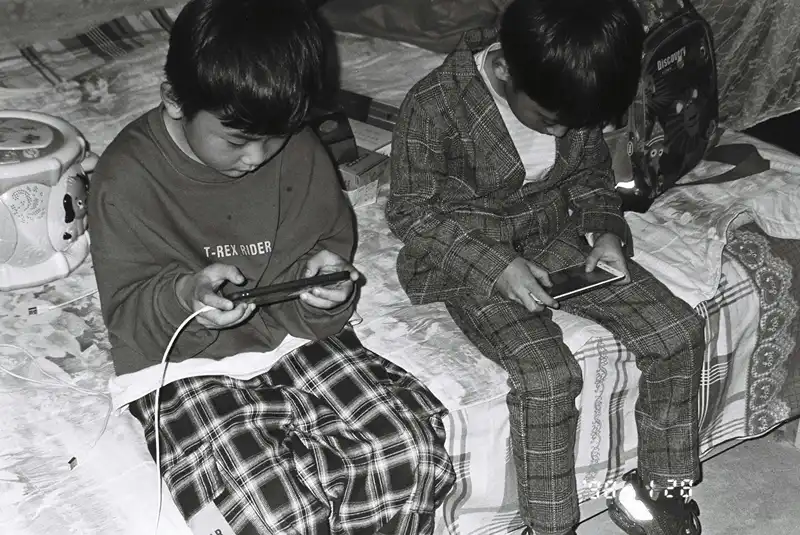Creating Safer Digital Worlds for Kids: How EdTech Supports Accountability and Protection
Children engage with digital environments at home and in school more than ever before. They use apps for learning, online platforms for entertainment, and virtual communities for socializing. These experiences help them grow, yet they also create risks that parents, educators, and platform developers must understand.
As technology becomes more integrated into daily life, building safe digital spaces for children remains essential.
The Expanding Digital Environment for Young Users
Online platforms shape how children learn and interact. Students complete homework through education apps, talk with friends in virtual spaces, and explore creative tools that improve digital literacy. Because this activity becomes part of their daily routine, you must use safety features intentionally.
Children explore identity, communication, and social skills online. These interactions help them develop independence, but they also make them vulnerable when safeguards are weak. EdTech has the potential to support safety by guiding communication, moderating content, and promoting healthy online behavior.
Why Safety Must Be Part of EdTech Design
Educators rely heavily on digital tools to support instruction, so the companies behind these platforms must prioritize protection. Safety involves more than restricting content. It includes systems that monitor risky behavior, tools that allow users to report concerns, and environments that encourage healthy interaction.
Developers who study child development and digital behavior can design platforms that support learning with fewer safety concerns. Simple reporting tools, active moderation, and clear communication rules help create spaces where children feel comfortable and supported.
Online Harms Remain a Real Issue
Many parents believe harm only occurs in unsafe digital spaces. However, even platforms advertised as kid-friendly have experienced harmful behavior and legal scrutiny. These situations highlight the importance of stronger protections.
These online harms can occur quietly, which makes them difficult for adults to detect without proper tools. Concerns around inappropriate interactions in virtual gaming environments have led to legal discussions about accountability. Children may not always understand what is inappropriate, so they might continue engaging in harmful interactions without realizing the long-term effects.
More recently, many predators have used popular gaming platforms to target and exploit children under parents’ noses. This has led to legal action across various platforms. For example, there have even been multiple Roblox lawsuits that have brought these issues to light.
However, when we acknowledge these safety issues openly, communities can push for stronger standards that protect young users across all digital spaces.
Challenges in Keeping Online Spaces Safe
Digital activity happens quickly. Children switch between apps instantly, communicate with strangers unintentionally, and encounter content generated by millions of users. These realities make it difficult for adults to supervise everything.
Common challenges include:
- High activity volume
- Constant content updates
- New games and communities
- Evolving online behavior
- Harmful individuals adapt quickly.
EdTech companies that understand these challenges can build tools that track safety concerns more effectively.
Schools as Safety Partners
Schools support online safety by teaching responsible digital behavior. Educators introduce students to digital citizenship, healthy communication, and safe browsing. These lessons help children understand risks and make informed choices.
Teachers can also observe behavioral changes. When students show signs of distress related to online interactions, educators may be the first to notice. Schools that train teachers in digital awareness give them the skills needed to support students.
Parents’ Role in Guiding Healthy Online Habits
Parents influence how children behave online. When families set expectations, explain boundaries, and maintain open communication, children feel more comfortable sharing concerns.
Parents benefit from learning how tools, apps, and devices function. Many child-centered technologies include controlled communication features or simplified devices that help limit exposure. These tools allow you to introduce technology gradually, making it easier for parents to supervise online activity.
A child who knows how to ask for help, report an issue, or adjust privacy settings feels more confident in the digital world.
How Technology Can Build Safer Digital Environments
EdTech companies can support online safety with thoughtful design. This includes systems that protect children from harmful interactions and help adults understand what is happening within digital spaces.
Two helpful strategies include:
Advanced Moderation Systems
Automated systems can scan for harmful language or patterns. This allows moderators to respond quickly and prevent issues before they escalate.
Easy-to-Use Reporting Tools
Clear reporting tools give children the ability to ask for help when something feels wrong. When the process is simple, young users are more likely to use it.
Both features help create digital environments where children can focus on learning and positive engagement.
Digital Literacy Gives Kids More Control
Digital literacy empowers children to navigate online spaces safely. When they understand how the internet works, they can better identify risks and avoid unsafe interactions.
Digital literacy skills include:
- Recognizing suspicious messages
- How personal information spreads online
- Evaluating content for reliability
- Knowing how to block or report harmful interactions
These skills help children make safer decisions and develop confidence as digital learners.
Community Responsibility in Online Safety
Online safety requires participation from parents, schools, developers, and policymakers. When all groups work together, children receive consistent guidance and support.
A community approach includes:
- Communication between parents and teachers
- Sharing concerns helps uncover larger patterns.
- Partnership between EdTech and schools
- Developers can refine tools based on educator feedback.
- Policy efforts to enhance safety standards
- Stronger guidelines help set expectations for all digital platforms.
Collaboration strengthens safety across a child’s entire digital life.
Supporting Healthy Digital Habits at Home
Balanced technology use supports overall well-being. Children benefit from routines that include outdoor activities, academic focus, family connection, and downtime away from screens.
Parents can help by setting schedules, modeling healthy habits, and encouraging interests that do not rely on technology. A balanced routine builds resilience and prevents digital overwhelm.
Preparing Children for Future Digital Environments
Technology will continue to evolve. Children will interact with new devices, platforms, and skills throughout their lives. By teaching them how to stay safe, make informed choices, and understand the digital world, adults prepare them for a future where online interactions are unavoidable.
EdTech companies, educators, and families all contribute to this preparation. When safety is valued and consistently reinforced, children feel empowered to explore and learn.
Moving Ahead with Safety as a Priority
Children deserve digital environments that promote curiosity and well-being. When adults integrate protection into technology and remain engaged, young users can enjoy the benefits of online learning without unnecessary risks.
Continued collaboration between families, schools, and technology leaders helps ensure that digital environments remain safe, welcoming, and supportive for the next generation.










